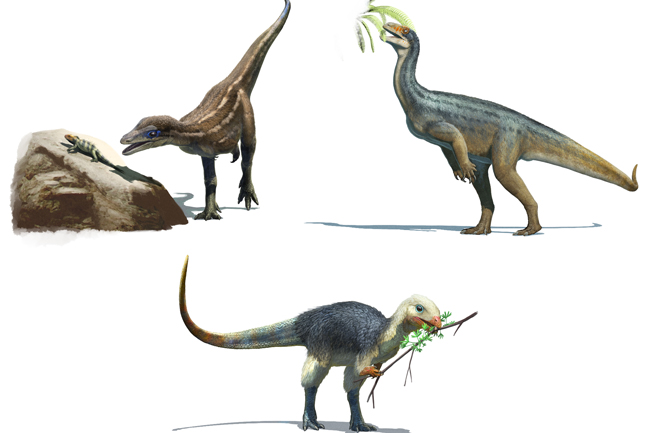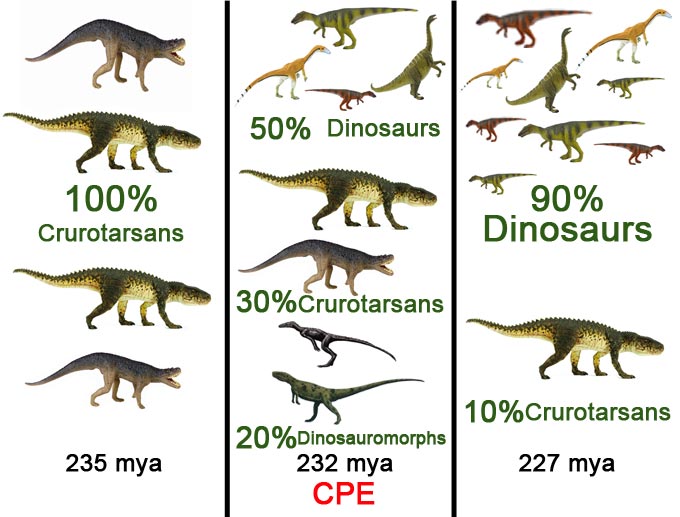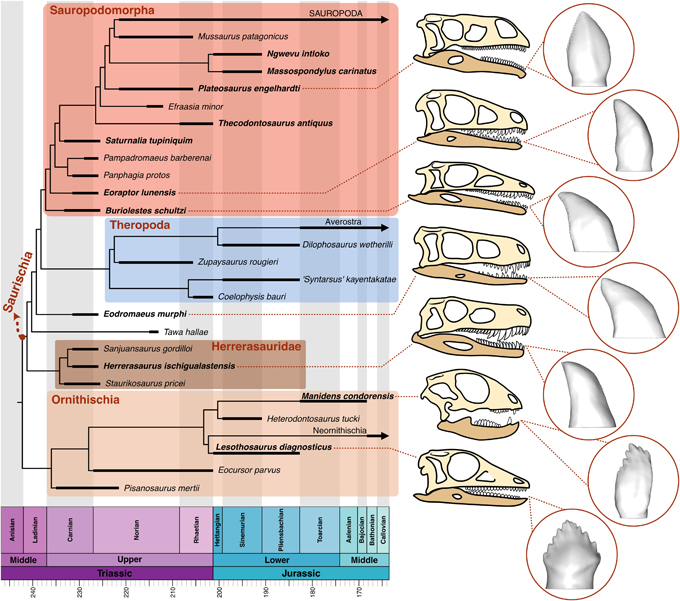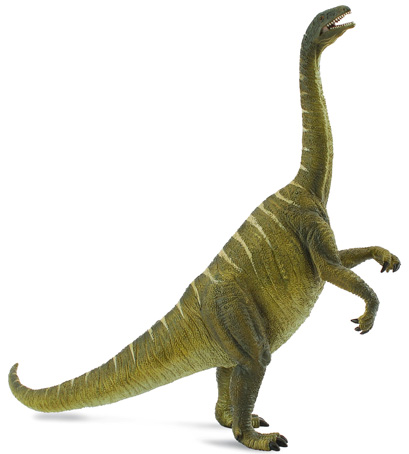Recently published research examining tooth shape in early members of the Dinosauria has provided new information on dinosaur diet. The very earliest known dinosaurs included carnivores, herbivores as well as omnivores. Early dinosaurs were already developing adaptations to exploit a wide variety of feeding strategies.

Picture credit: Gabriel Ugueto
Dinosaur Diet
Writing in the academic journal “Science Advances”, the scientists from the University of Bristol developed computer models to test the function and bite force of the teeth of a variety of early dinosaurs. These results were then compared with the data from extant lizards so that the diet could be inferred. The study shows that many groups of plant-eating ornithischian dinosaurs were ancestrally omnivorous and the ancestors of the huge sauropods, dinosaurs such as Apatosaurus, Diplodocus, Dreadnoughtus and Argentinosaurus were carnivores.
The scientists conclude that the ability of the Dinosauria to diversify their diets early in their evolution probably explains their evolutionary and ecological success.
Studying the Earliest Dinosaurs
The Dinosauria dominated terrestrial ecosystems for much of the Mesozoic. However, their origins and how they came to out compete other tetrapods during the Middle to Late Triassic remains the subject of intense debate. Over a few million years, the dinosaurs seem to have rapidly diversified and moved from being essential “bit-part” players in terrestrial ecosystems dominated by other types of archosaur and synapsid to becoming the dominant group.
Analysis of trackways discovered in the Southern Alps suggests a link between extensive faunal turnover leading to the dominance of the Dinosauria and the Carnian Pluvial Episode (CPE), a period of major climate change and a shift in the types of flora.

Picture credit: Everything Dinosaur
To read more about this research into the impact of the Carnian Pluvial Episode on terrestrial ecosystems: Dinosaurs – In with a Bang and Out with a Bang.
A Wide Diversity of Different Skull and Tooth Shapes
Commenting on the implications of this study, lead author Dr Antonio Ballell stated:
“Soon after their origin, dinosaurs start to show an interesting diversity of skull and tooth shapes. For decades, this has made palaeontologists suspect that different species were already experimenting with different kinds of diets. They have compared them to modern lizard species and tried to infer what they ate based on the similarities in their teeth.”

Dr Ballell, based at the University’s School of Earth Sciences added:
“We investigated this by applying a set of computational methods to quantify the shape and function of the teeth of early dinosaurs and compare them to living reptiles that have different diets. This included mathematically modelling their tooth shapes and simulating their mechanical responses to biting forces with engineering software.”

The Plateosaurus replica (above), is part of the CollectA not-to-scale range of prehistoric animal models.
To view this range: CollectA Prehistoric Life Models and Figures.
Predicting Dinosaur Diet
Co-author of the paper, Professor Mike Benton explained:
“With this battery of methods, we were able to numerically quantify how similar early dinosaurs were to modern animals, providing solid evidence for our inferences of diets. Theropod dinosaurs have pointy, curved and blade-like teeth with tiny serrations, which behaved like those of modern monitor lizards. In contrast, the denticulated teeth of ornithischians and sauropodomorphs are more similar to modern omnivores and herbivores, like iguanas.”
Innovative Machine Learning
This innovative research used machine learning models to group the earliest dinosaurs into different diet categories based on their jaw mechanics and tooth shape. For example, Thecodontosaurus, a dinosaur which roamed the Triassic archipelago where Bristol now stands, had teeth well adapted for feeding on plants.
Senior co-author, Bristol University’s Professor Emily Rayfield commented:
“Our analyses reveal that ornithischians, the group that includes many plant-eating species like the horned dinosaurs, the armoured ankylosaurs and the duck-billed dinosaurs started off as omnivores. Another interesting finding is that the earliest sauropodomorphs, ancestors of the veggie long-necked sauropods like Diplodocus, were carnivores. This shows that herbivory was not ancestral for any of these two lineages, countering traditional hypotheses, and that the diets of early dinosaurs were quite diverse.”
The Evolution of Different Diets
The researchers postulate that the ability for the Dinosauria to evolve different dietary habits may have played a key role in the ecological and evolutionary success.
Everything Dinosaur acknowledges the contribution of a media release from Bristol University in the compilation of this article.
The scientific paper: “Dental form and function in the early feeding diversification of dinosaurs” by Antonio Ballell, Michael J. Benton and Emily J. Rayfield published in Science Advances.






Leave A Comment